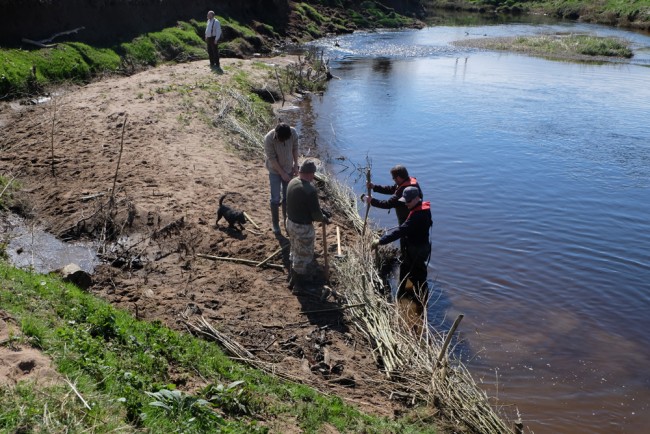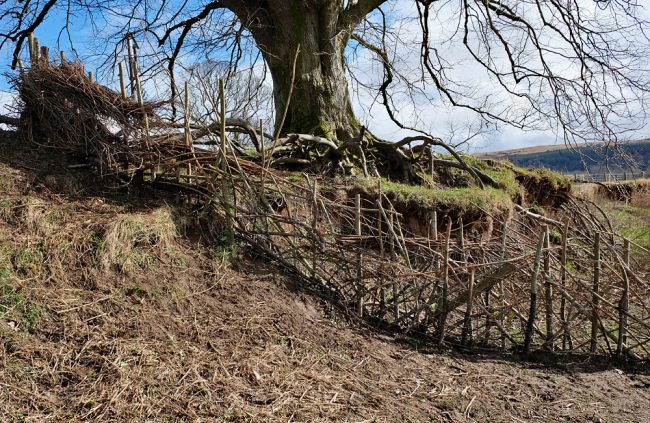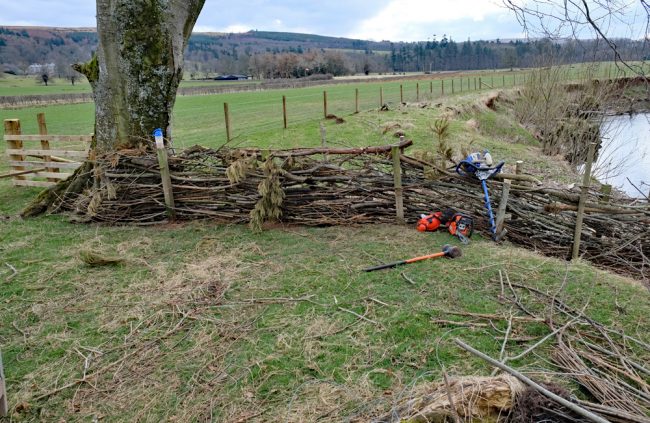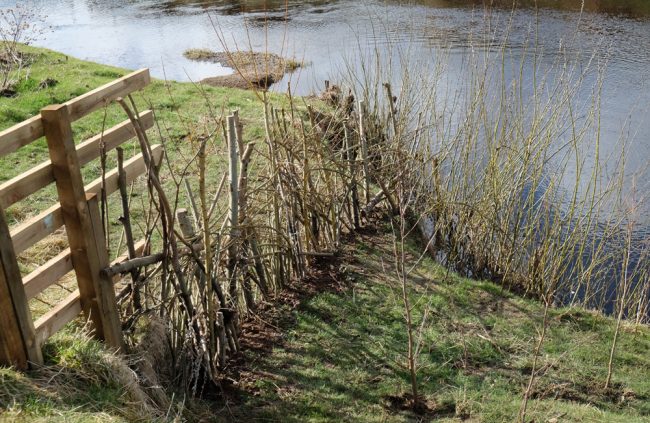As regular readers will be aware, the Trust has been working to reduce severe erosion on the middle reaches of the Girvan over the last few years. This work is almost complete and apart from a few more trees that have yet to be planted, we are just about at the stage that we’ve nothing else to do other than wait and see the results.

In 2016, we used willow faggots (bundles) staked into bed at the start of the restoration process. Previously anglers had used hazel which had failed as it didn’t root however it had trapped some sediment. Willow cuttings were planted across the area.
Already we know that erosion has slowed dramatically although we can’t yet say its stopped altogether. Last week, the landowner installed fencing at the bank top at both locations ahead of the livestock going in. Sheep have munched their way through our previous efforts reducing the effectiveness of the work we did and continued to drive erosion. Convincing landowners that livestock drive erosion is difficult and there are many reasons why they prefer not to exclude animals from riverbanks, not least the cost of fencing. Fear of losing subsidies and the loss of free water are also considerations. However, these issues can be overcome if they really wish to.
Another problem when fencing alongside spate rivers is the fear that the fences will be destroyed in high water and there’s no doubt that this is a problem in some places. This was the case on the Girvan at our erosion sites so we agreed with the landowner that they should fence the bank top and we would install leaky barriers linking the fences to the river that would exclude livestock. Hopefully, these low cost barriers will withstand the spates but if not, they can be easily repaired. We built these using brash, old fence posts and willow stakes. If the willow stakes root, they should provide strength to the structures.

Installing a leaky barrier constructed largely from willow stakes and brash. Willow rods pushed into the ground should root making this a living fence. Hopefully sediment will deposit behind this helping protect the lime tree that has been undermined.Will this keep lambs out? Time will tell.

This barrier was made using old fence stabs and mixed brash. The new fence should stand for many years if the river doesn’t further erode the bank
We used several different techniques to construct these barriers and will compare results. Each barrier took a couple of hours or less to complete and the material used was free with the only cost being manpower collecting and installing the brash.

Another method made using willow poles and brash. Again this should become a living fence/hedge or ‘fedge’. Adler and Aspen trees have been planted on the bank.
Next week we plan to plant the last few trees into the banks and after that we will monitor results. Watch this space for updates.
Should anyone wish to visit these locations or need advice on green engineering, then please get in touch and we will help in any way we can.

